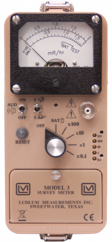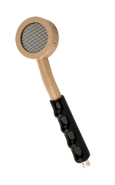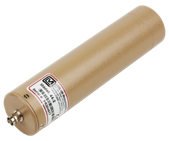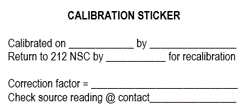
Radiation Monitoring Devices
Radiation survey meters are required in most labs working with radiation. There are several types of survey meters, and care must be taken to select one sensitive to the radiation in use. One common isotope that requires special consideration is Tritium (H-3), which emits a low-energy beta that is not detectable by most handheld survey meters.
Some common types of radiation monitoring devices include:
- GEIGER MULLER (GM)
- Best for: Beta Sources (e.g. P-32, S-35, Tc-99)
- IONIZATION CHAMBER
- Best for: Medium to high dose rate Gamma/X-Ray measurement
- SODIUM IODIDE (NAI)
- Best for: Gamma sources (e.g. Na-22, Cs-137, I-125)
- LIQUID SCINTILLATION COUNTER (LSC)/GAMMA COUNTER (GC)
- Best for: Tritium contamination detection, radiation quantification
Choosing a Meter
Meters are typically sold in two parts, a meter and a detector (or probe). Many meters and detectors are interchangeable. For example, one of the most popular meters is the Ludlum Model 3. The Model 3 can be equipped with different detectors based on the needs of the lab, such as the Model 44-9 pancake GM detector which is good for beta sources or the Model 44-3 NaI detector for gamma sources.

Ludlum Model 3

44-9 GM Detector

44-3 NaI Detector
Some common meter vendors/manufacturers include:
If ordering a new meter, please contact the Office of Radiation Safety. Certain meters cannot be calibrated on campus and would need to be serviced by an outside vendor. Additionally, the new meter will need to be added to the EH&S database.
radiation meters calibration
Radiation meters are required to be calibrated once a year. The Office of Radiation Safety offers calibrations and minor repairs for most meters. Every meter should be labeled with a calibration sticker which will state the due date of the next calibration. Meters are collected from labs as their due date approaches. Please do not use a meter if it is outside of the calibration date. If your meter has become out of calibration, notify the Office of Radiation Safety.

